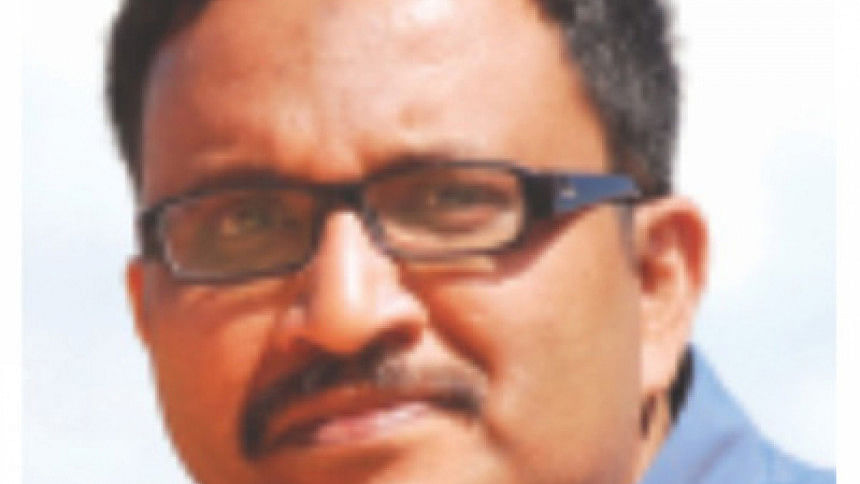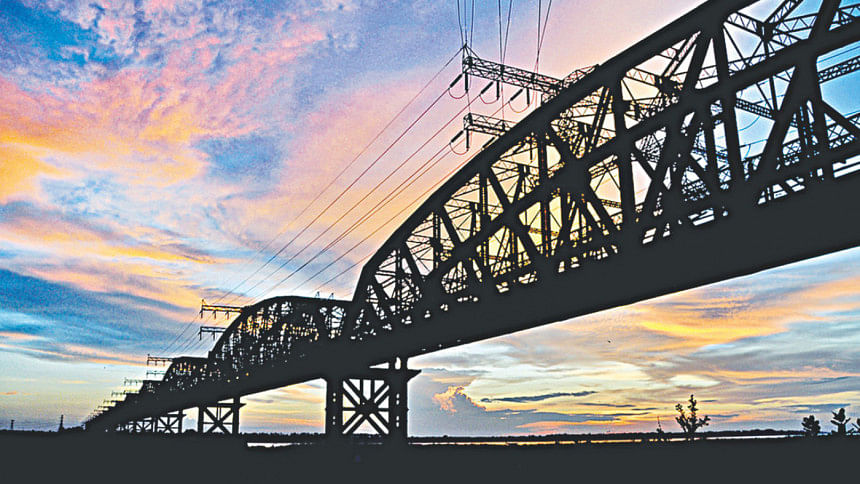In sync with sustainability

Given the haphazard growth of the current capital city, Dhaka, the question of sustainable development has become a pressing concern. With the advent of a new Detailed Area Plan for Dhaka Metropolitan, it is now the right time to explore the issues of sustainable engineering and construction. Prof. Dr. A.F.M. Saiful Amin, Department of Civil Engineering, Bangladesh University of Engineering and Technology (BUET), recently addressed these very issues, explaining the concept of sustainability in terms of engineering whilst highlighting the areas that those in charge with preparing the fresh Detailed Area Plan need to look into.
"Firstly, before understanding sustainability, one must first grasp the notion of development. Development, in simple terms, is improvement in Human Development Index. Development, thus is simply improving what is already there," he began. "Social or physical development must go hand in hand with social emancipation. The only way development can even be considered sustainable is only when society itself decides to take charge of what is being developed," he said. One of his favourite examples of society taking charge of such development project is that of Hardinge Bridge. Hardinge Bridge located at Padma located at Paksey in western Bangladesh was constructed in the year 1912. "It created what is till today an extremely important and strategic location. The project was a resounding success and this was simply because the locals in the area realised its importance and worked for it with gusto." The walkways next to the bridge, the second largest bridge in Bangladesh, helped connect even pedestrians over the stretch of the mighty Padma and allowed easier movement of goods and people. "Economically, it was very important and thus the people were fully committed to it. Its construction led to the development of the area and we continue to reap the benefits of Hardinge Bridge to this day, showing just how sustainable it was," Professor Saiful explained.

This acceptance and support from society is the first step to sustainable development and nurturing this acceptance is the role of civil engineers, Professor Saiful opined. "So the first thing one must think of is planning for society," he continued. "The next part is the design. Think of any building like a human being; for the first 18 years of its life, it expects a lot of thinks. Then it can function on its own for say another 60 years after which it again needs to be looked after." Thus, sustainable construction must take into account the lifecycle of any building and design accordingly, knowing that repairs and reconstruction are necessary for keeping the structure at full strength. Professor Saiful then pointed out other important things that need to be done to not only preserve a building's structure but rather its capacity to function. "There will be a need for day to day maintenance and costs will rise and demand immediate repairs and monitoring," he explained. "One must also understand the operational manual, abide by it and pay close attention to not doing something that may be beyond the structure's capacity," he added.
The idea of capacity inevitable brought up questions of resiliency. How can we ensure a building is resilient? "The engineer's biggest challenge is to ensure harmony between his designs and nature's. Consider a tree; it is strong and broad in its foundations but the barks grow less thicker the higher we go. This is called balance and helps maintain the basic structure of the tree against wind, water and other elements," he said. "Nature has the capacity to recover from adversity and a building must be designed thinking the same," he proposed.
As the discussion turned towards sustainable construction materials, the mood changed into even more seriousness. "We do not have the needed rocks under our soil in Bangladesh. This can be alarming and the best reason to understand why is to look at the Jamuna river and realise that it changed its course and no one can say why," he pointed out. Such changes in a water body's course can have a detrimental effect on the surrounding areas and may make the soil even weaker, given the lack of rocks. "Bangladesh has a material scarcity and as we do not have hard rocks, we use sand to make bricks which are then used as concrete. This is of course not the best nor the safest practice," he warned. "End of the day, our concrete is still like clay and if we go on extracting raw materials at the current rate, we must not do so without considering the implications on the environment," he declared. "In terms of construction, one must pay attention to efficient use of materials. One mustn't think only in Lifestyle costs but also monetary costs," he said. His most important advise though was to salvage waste and use as many recoverable materials as possible for a sustainable project.

As we drew towards the end of our discussion, Professor Saiful then gave some advice to those wish to engage in construction. "There must be open channels of communication between the designer of a building and the user. Both must explain what they want out of the building and how it can be achieved," he said. He also pointed out that at the current rate that new flats are sprouting all over the city, it will eventually lead to chaos. "Like I mentioned, every building has a life span. What happens in 50 years when majority of the buildings need to be reconstructed? How many of the flat owners will foot the bill? And how will such properties be divided as inheritance?" he wondered out loud. He postulated the need for a branch of social science to start planning for this very scenario and advised that successful models implemented in places like Tokyo and New York ought to be studied. "End of the day it is society that will play the most vital role. It will be the civilians who must bring about a social transformation by taking baby steps. Leave 6 inches space for your neighbour and expect him to do the same and soon there will pockets of space that will help the city breathe better," he said.
Professor Saiful identified many critical areas that need urgent attention. However, an optimist in the end, he explained that Bangladesh is still relatively a very new country and all countries have already faced the problems currently facing us. "We need to look at the models of those who have already been where we are and how they tackled it and then we need to tailor those activities for our country," he said. If done right, Professor Saiful believes that Dhaka can easily be one of the most liveable cities in the world. However for that to happen, we must all do our part and not expect state bodies to bear the brunt of what needs to be done.

 For all latest news, follow The Daily Star's Google News channel.
For all latest news, follow The Daily Star's Google News channel. 



Comments